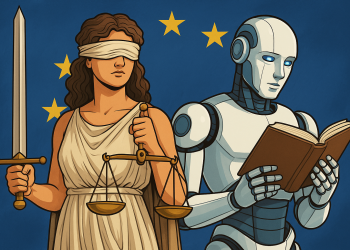Tim Soret, known for his work on The Last Night, recently sparked a heated debate by claiming that AI has “invented” a new visual style, a polished, modernized take on the classic aesthetic of Daggerfall. Sounds wild, right? It’s like saying you invented a new airplane just by drawing a picture of one. But this isn’t just another AI hype tweet; it touches on what AI can and can’t do in game art and design.
Soret’s tweets praised a short AI-generated video that showcases rolling green hills and Gothic castles, which look like a glossed-up retro fantasy. He insisted that if no human has blended these techniques before, the AI creation counts as an invention. He even compared it to his own claim of inventing a style with The Last Night back in 2017. However, as many pointed out, similar artistic styles, such as those in Octopath Traveler, were announced around the same time, so parallel creative ideas aren’t unusual.
Interesting to see the praise for this AI-invented visual style. Everybody wants it, and indie devs are rushing to prototype it & make it real. https://t.co/rASfMaZpxM
— Tim Soret (@timsoret) July 21, 2025
Here’s the thing: AI doesn’t actually think or invent in the human sense. It’s a fancy tool that generates images based on patterns it learned from existing data. MIT researcher Ashesh Rambachan points out that these models don’t understand the world; they just mimic it impressively. You might get a few seconds of a 3D-like environment, but turn the camera, and the AI often forgets where it just was, creating bizarre, non-Euclidean messes. The videos Soret praises are exactly that, brief flashes of something cool, but no functional or playable game.
So, does AI invent a new game art style by remixing existing pixel art and gothic fantasy? Probably not. What it does is produce a picture that resembles a style, but lacks the intentionality and design finesse that human artists bring. The person who promoted those AI videos probably deserves more credit than the AI itself.
While some view AI-generated art as a potential blueprint for future game development, it remains a tool rather than a creator. Real games need intent, framed vistas, and actual mechanics—not just vibes. And AI’s current state can’t deliver that on its own. Plus, the environmental cost and the threat to creative jobs add layers of concern to this technology’s role in game development.
Ultimately, this saga serves as a reminder not to get swept up in hype or anger surrounding AI. It’s not some magical inventor but a mirror reflecting human creativity back at us, sometimes with a shiny new coat of paint. Whether AI will ever truly invent something new in games remains to be seen. For now, it’s a tool that needs humans behind the wheel.




















